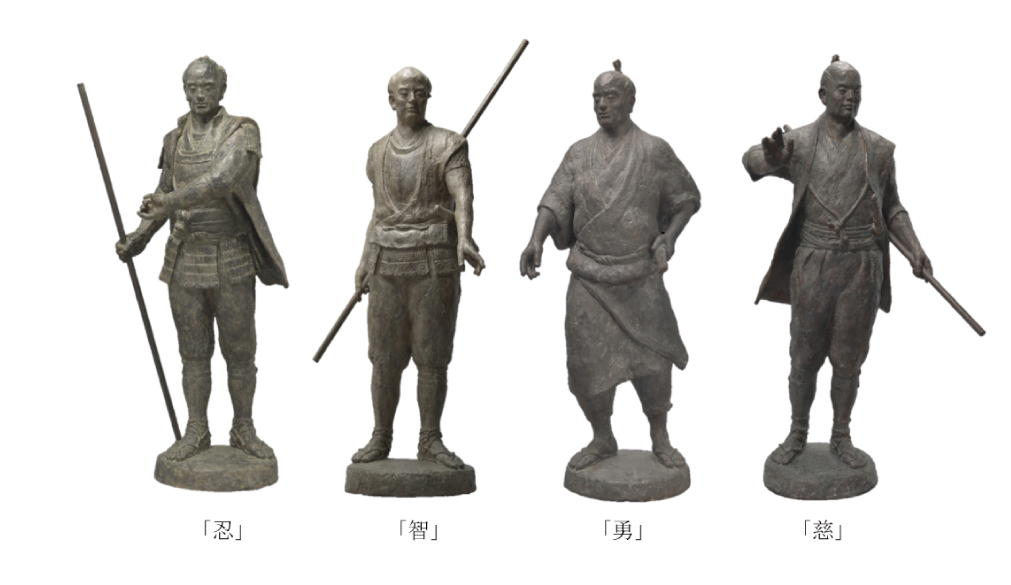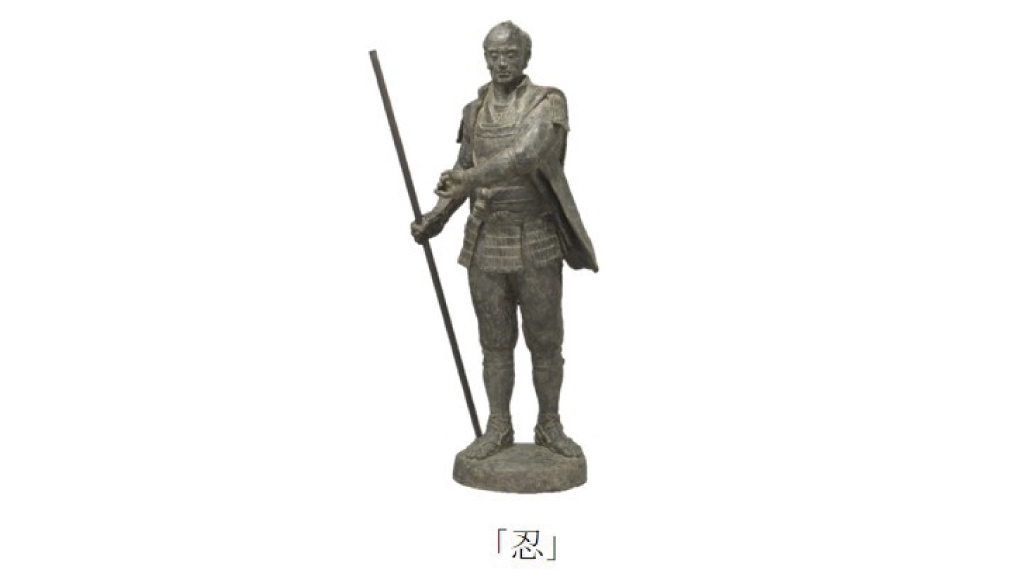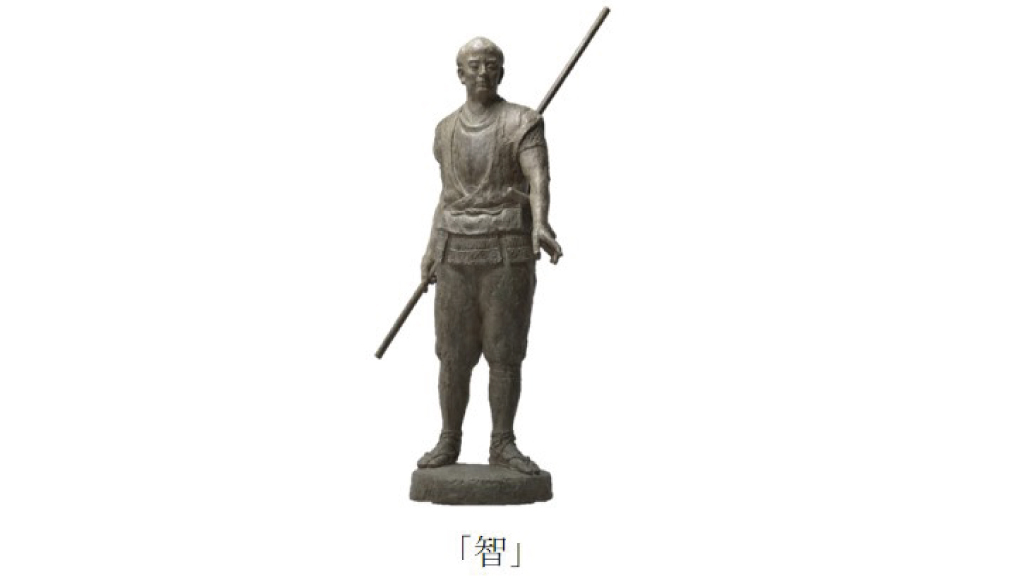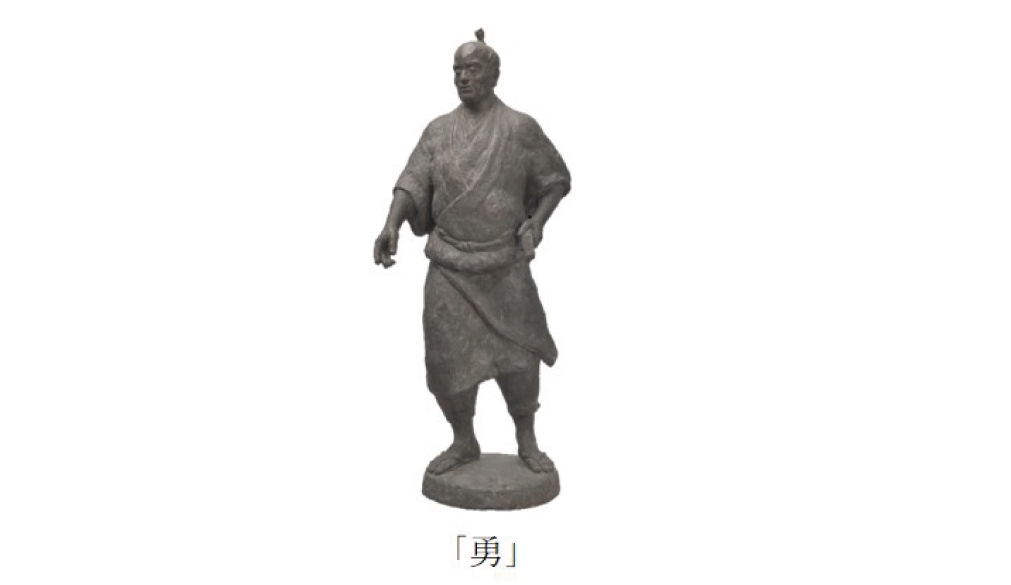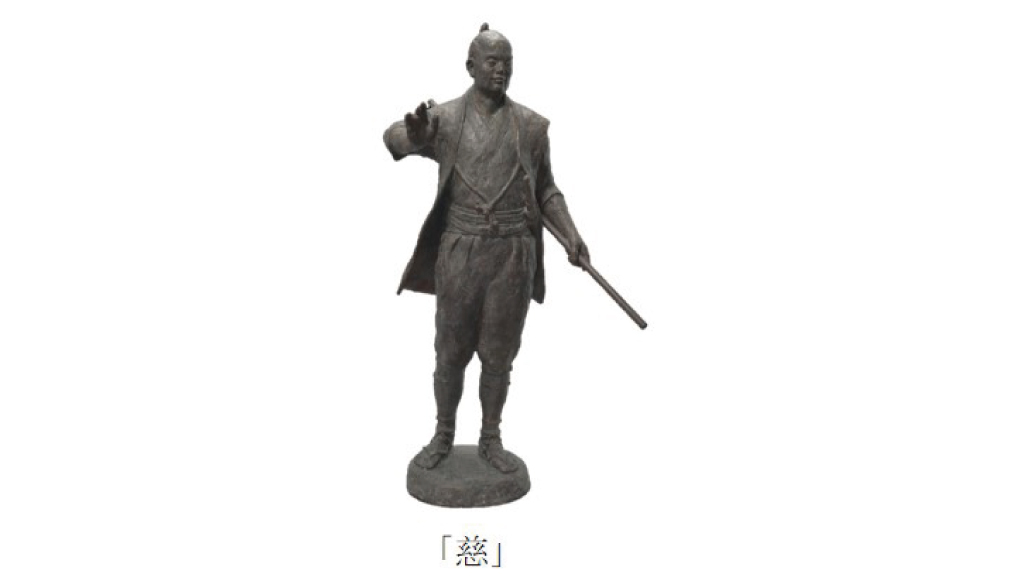Monument of Tokugawa Ieyasu and the Four Divine Virtues

This monument depicts Matsudaira Motoyasu, who was able to return home to Okazaki as a result of the Battle of Okehazama in 1560, here in his youthful days at the age of 25 when he renamed himself Tokugawa Ieyasu, previously having gone by Matsudaira Ieyasu.
Encompassed here is a desire for children to learn “to confront hardships and carve out one’s own future” from the figure of this local hero who turned difficulty into opportunity, and achieved the unification of the country and creation of a peaceful society.
The sculpture and calligraphy were commissioned to Kanbe Mineo of the Japan Art Academy and 18th Head of the Tokugawa Family, Tokugawa Tsunenari respectively.
Contributions from a variety of individuals, corporations, and organizations were used in the creation of this statue.
Onri-edo Gongu-jodo
Onri-edo Gongu-jodo or “Renounce the Tainted World” is a Buddhist Jodo (Pure Land) sect teaching. “To achieve a peaceful world, we must seek the protection of the Buddha and exert ourselves properly”. These words first appeared in the book, “Oujo Youshu” (985), by the monk, Genshin (942-1017).
In 1560, the warlord Imagawa Yoshimoto (1519-1560) was defeated by rival Oda Nobunaga (1534-1582) in the Battle of Okehazama. Tokugawa Ieyasu who was fighting in the front lines of the Imagawa army, feared retribution, and so he fled to the Daiju-ji, his family temple in Okazaki. As the pursuing Oda forces approached, Ieyasu prepared to commit seppuku, ritual suicide, in front of his ancestors’ graves, but was prevented from doing so by the temple’s 13th chief priest, Touyo, who changed his mind by teaching him the meaning and philosophy behind those words.
Under the banner Onri-edo Gongu-jodo, Ieyasu strove to overcome many difficulties, unifying the warring states and laying the foundations for 265 years of unparalleled peace under hereditary rule.
This statue depicts Ieyasu at the age of 25. The facial expressions are based on wooden effigies held in Kyoto’s Chion-in Temple, and the Rinshou-ji Temple in Toyota City, Aichi Prefecture. The armor and helmet are based on Ieyasu’s armor preserved in the vassal Sakai clan family collection.
Shishinzō: These four sculptures embody the four virtues of Tokugawa Ieyasu and the Mikawa sumurai who supported him in unifying Japan, ending the Warring States period, and building a realm of peace which lasted nearly 260 years. Nin, Chi, Yū, and Ji. Nin—patience, Chi—wisdom, Yū—courage, and Ji—the trust of others. These were created between 2016 and 2019 by Kanbe Mineo of the Japan Art Academy.
When creating the equestrian Monument of Tokugawa Ieyasu, he envisioned the four virtues encompassing it, taking inspiration from the four allegorical statues of the equestrian Monument to General de Alvear, a masterpiece of Antoine Bourdelle, one of the leading artists in modern sculpture, installed almost 100 years earlier in Plaza de la Recoleta, Buenos Aires, capital of Argentina.
Modern Japanese representational sculpture encapsulates civilization’s long history, including the Buddhist art traditions of Japan, modern sculptural techniques of Europe and the Greek, Roman, Egyptian, and Mesopotamian cultures from which they originate, as well as the art and culture of Asia.
In this context, the equestrian Monument of Tokugawa Ieyasu and the Four Divine Virtues is truly the pinnacle of modern Japanese sculpture.
Okazaki Castle Outer Moat Enclosure >


